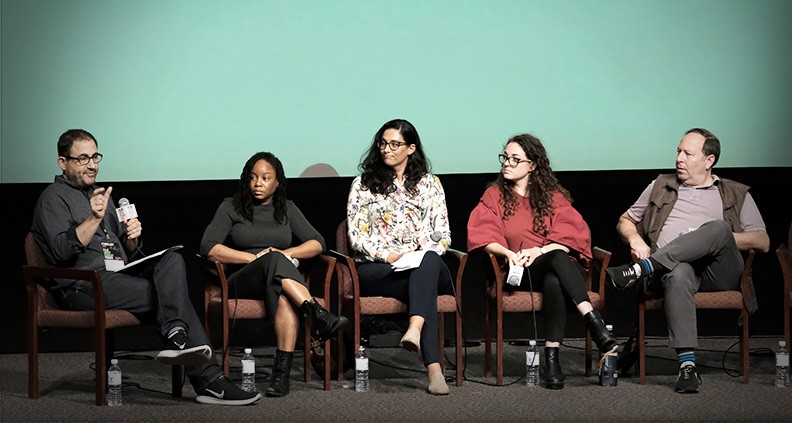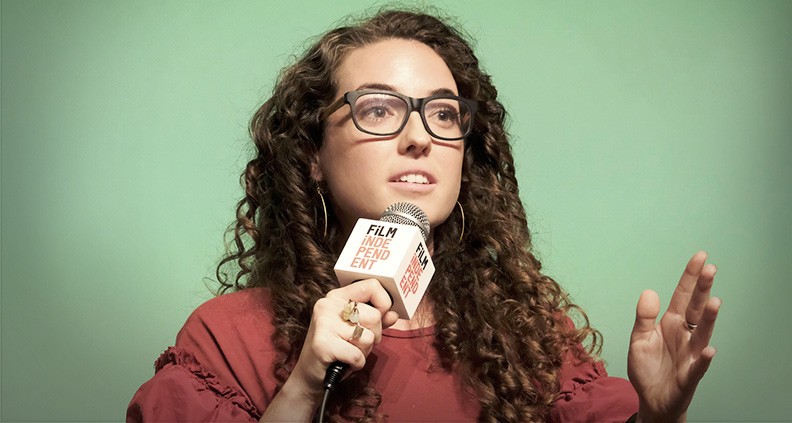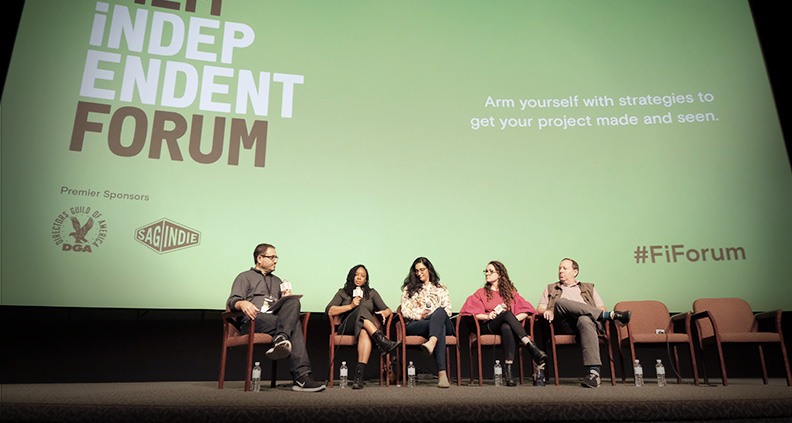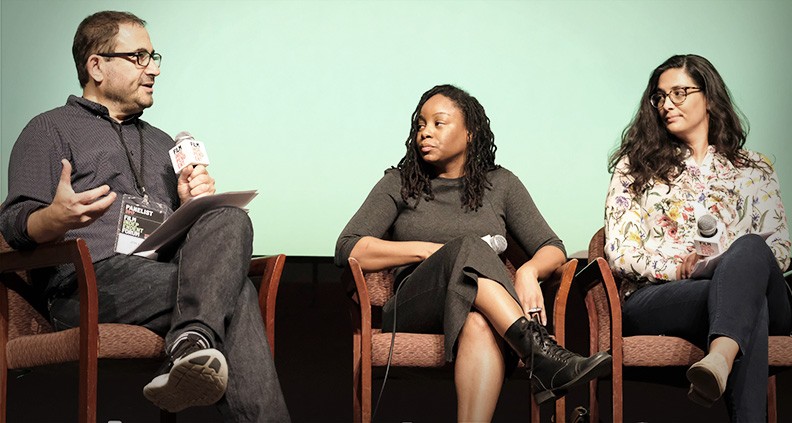At last month’s Film Independent Forum, industry experts offered their insights at the event’s annual Marketing and Distribution Clinic. This year’s panelists included Submarine Entertainment cofounder Josh Braun, Array Director of Marketing Mercedes Cooper, Film Independent’s own Alia Quart Khan and indie film marketing-and-distribution strategist Missy Laney. Filmmaker, author and film consultant Jon Reiss served as moderator. Representing Array—filmmaker Ava DuVernay’s innovative distribution collective—Cooper collaborates with filmmakers to form ties with outside communities, surmising that it’s important to forge a loyal audience that will support filmmakers throughout their entire career, not just their first feature. “We want you to be able to take your audience with you as you continue filmmaking,” she said. It pays to know your foundation—e.g. organizations to contact to reach out to on a grassroots level. Cooper noted, “As early as you are starting to physically work on your film, start to connect [with] and build your supporters, the people who are going to want to see that film.” But in order to reach these communities, it pays to be detail oriented. “There is a delivery list,” Cooper affirmed—stressing in particular the importance of capturing promotional stills. “Five is not going to work. Take as many stills on set as possible,” she said. Sometimes of course, filmmakers have to wear several hats—especially if there isn’t enough money to hire a professional. That means also wearing a publicity hat. And for that, Khan advises filmmakers to think with the journalist in mind. “Come up with a great answer for ‘Why should we care about your film?’” she said. “When the journalist is being inundated with a gazillion pitches, yours has to stand out and you have to do that hard work.” Think about how to set your film apart. Added Khan, “While you were in production, [was] there something interesting [happening] on set you could provide the publicist with as an angle?” Laney brought up the phrase: “Content is king, but distribution is queen” adding “and she wears the pants!” Laney advised the audience to learn how much films are being sold for, and to pay attention to box office sales. She stressed the importance of setting goals—though it always pays to have a backup plan (several, in fact). Your goals are still attainable even if you don’t get into your preferred festival. Because you’ve hopefully studied the market, you know who your audience is and have the budget, the publicity and resources to reach them. “We all want a long successful career as filmmakers, and in order to do that we have to work within the marketplace and within [our] resources,” said Laney. The marketplace is crowded as ever right now, so the challenge—and fun!—is in thinking creatively to find your audience. As Laney explained, luck is not a business model. “If this was a restaurant, you wouldn’t buy a building, hire staff, design a kitchen, etc., open [the] doors and expect it to be a packed house.” Reiss asked how the bigger SVOD platforms are affecting the marketplace. “The SVOD component of your deal is so important from the point of view of a distributor,” said Braun. “Thinking about pre-selling, the effect of how that effects the whole distribution of your film is potentially tricky and can make it difficult to have a theatrical [release].” Think about what you want for your film, and go to your financier. “Netflix can pay a large amount of money for worldwide SVOD rights when it’s going to be mainly exploited on that platform.” In such a buyout scenario, Braun explained, the filmmaker typically gets money upfront—as opposed to a traditional distributer like Sony Classics, where there could be money down the line if your film is a success, along with some limited upfront money. That’s the dilemma and risk. Do you want the long tail, or for your film to be seen on a platform like Netflix, with people potentially watching it from all over the world? It’s up to the filmmaker to decide. For some, the ultimate goal is Netflix. “But every project is different,” Braun said. “We’ve had projects on Netflix that didn’t surface up on through the internal algorithms, so they didn’t make as much of a splash.” Braun also suggests for films to premiere at the very best festivals for sales. And the title of your film is crucial. “Don’t be precious about the title, because that can be the make-or-break element sometimes of the sale of your film.” Reiss chimed in: “You really have to be aware of what your goals are before, because that really determines your strategy.” Lastly, video clips are just as—if not more valuable—than photos. Have a few clips prepared for each window of your release. “If you have a theatrical window, the publicist is going to be screening for three or four exclusive clips,” Reiss said. And remember: content strategy is key!
For more information about upcoming Film Independent events, click here. To learn more about our Film Education programs, click here. Learn how to become a Member of Film Independent by visiting our website, and click here to subscribe to our YouTube channel.



